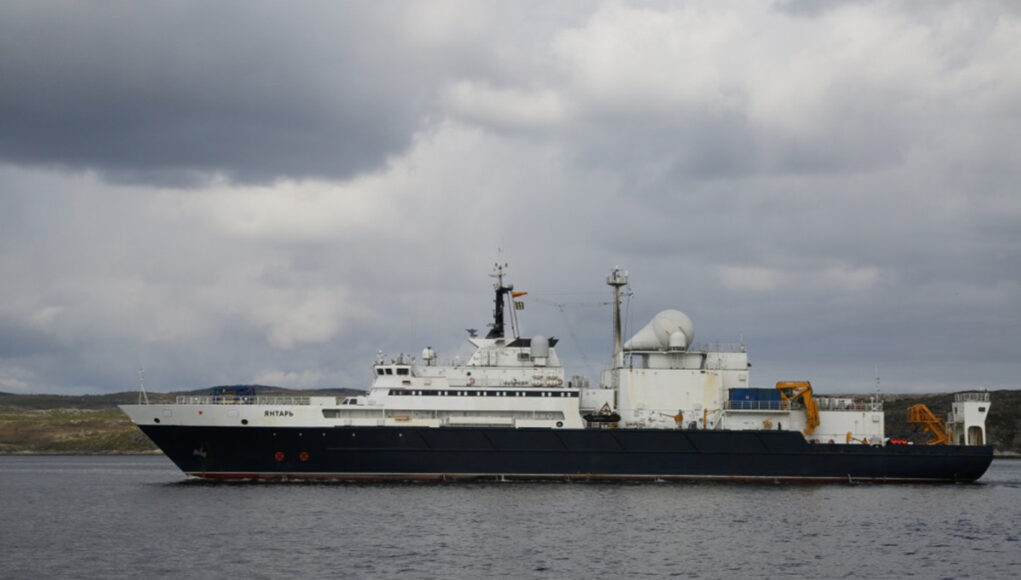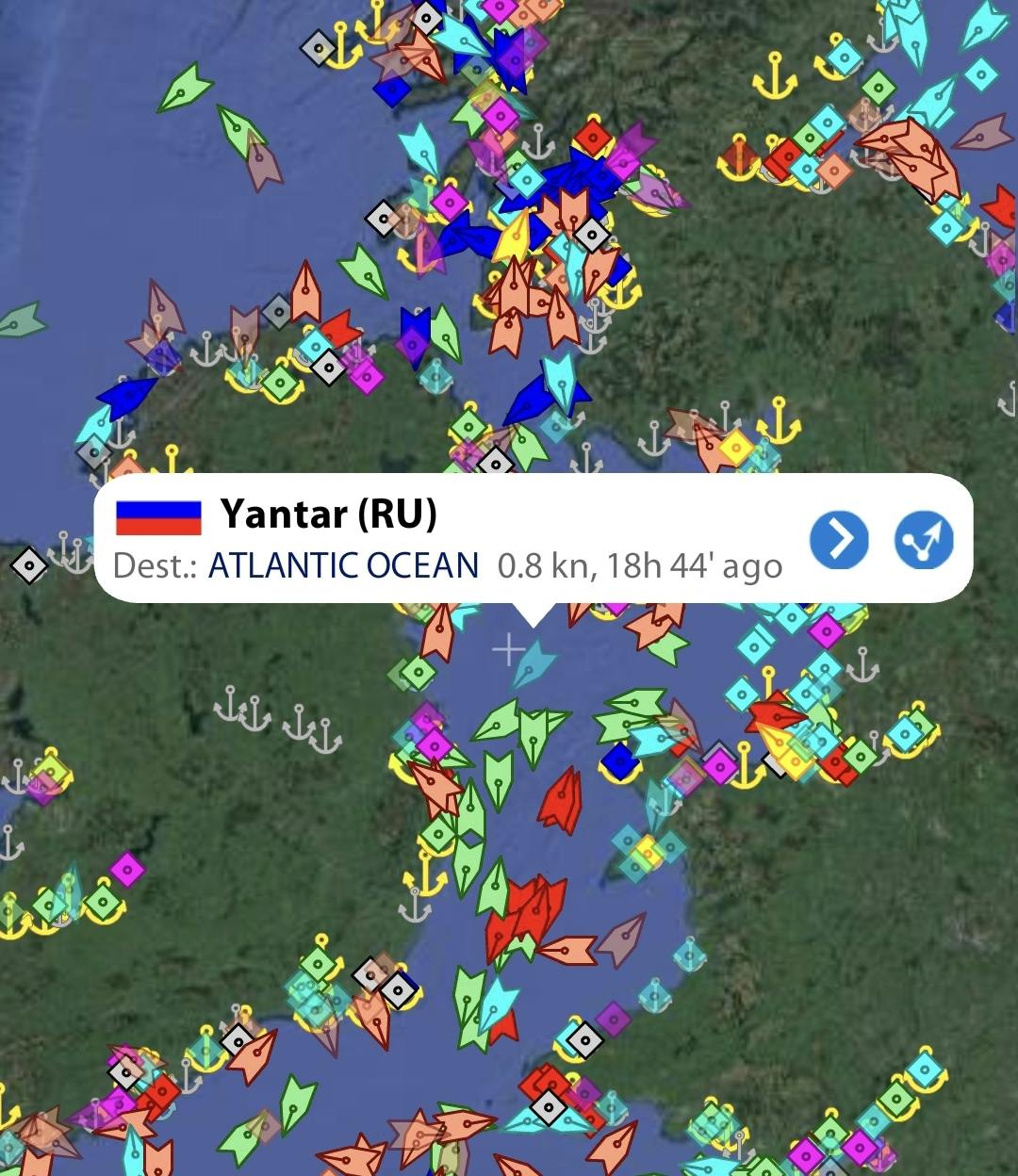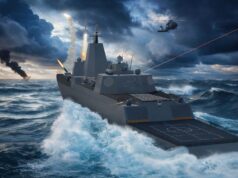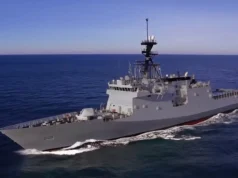A Russian research and intelligence vessel, Yantar, has been spotted loitering near critical underwater infrastructure in the Irish Sea, raising concerns about potential threats to key communication cables.
The ship, which is closely monitored by a P-8A aircraft and possibly the HMS Iron Duke, briefly activated its Automatic Identification System (AIS) on 14 November 2024, revealing its location.
The Yantar is known for its role in intelligence gathering, particularly focusing on submarine-related operations. It is equipped with cutting-edge technology for deep-sea exploration and is believed to be capable of carrying out reconnaissance missions targeting undersea cables and other vital infrastructure.
As noted by experts, the Yantar is a part of Russia’s maritime intelligence operations, and its recent activities have garnered attention.
The vessel’s position was tracked via AIS, a tool typically used to monitor shipping vessels, and confirmed by open-source intelligence (OSINT). The ship’s activities are also believed to be coordinated with other naval assets, such as an oiler and a frigate, previously seen accompanying the vessel.
The presence of Yantar and its potential implications for regional security continue to be a matter of interest.
The ship
The Yantar is a Project 22010-class intelligence ship operated by the Russian Navy, equipped with advanced capabilities for deep-sea missions. Acting as a mothership for specialised submersibles, it can deploy the Rus-class and Konsul-class mini-subs, which are capable of reaching depths of up to 6,000 metres (around 20,000 feet). This remarkable range allows Yantar access to and possible interaction with undersea infrastructure, including telecommunications cables stretching across seabeds worldwide. The U.S. Navy has voiced concerns over Yantar’s capability to sever such cables, suggesting it may have uses beyond simple scientific exploration.
Though officially described as an “oceanic research complex” by Alexei Burilichev, head of the Russian Defence Ministry’s deepwater research department, Yantar’s activities have often attracted international scrutiny and raised speculation. The vessel has been observed close to important undersea telecommunications routes and infrastructure, sparking concerns among NATO and other nations about its possible intentions. With a mission profile blending intelligence-gathering and deep-sea research, Yantar serves strategic purposes well beyond civilian applications.
Yantar has made headlines for its presence in key regions. In 2015, it was spotted off the coast of Guantánamo Bay, Cuba, and later in Norwegian waters. In the following years, it appeared near Greenland, Israel, and Cyprus – locations that coincide with sensitive undersea cables or military recovery missions. Notably, in 2017, Yantar was involved in retrieving equipment from crashed Russian aircraft in the Mediterranean and joined international efforts to locate the missing Argentine submarine ARA San Juan.
More recently, Yantar has been reported off the Brazilian coast, in the English Channel, and near Ireland, often closely following submarine cables and sometimes operating without activated identification systems. Its presence in the North Atlantic, especially close to critical transatlantic cables, has led to increased monitoring by NATO countries. In 2023, the Norwegian Coast Guard documented an incident where Yantar shadowed the research vessel RV Kronprins Haakon for over 16 hours, mirroring its movements in what Norwegian officials called harassment, though Yantar adhered to international maritime law.
With a full load displacement of 5,736 tonnes, Yantar is 107.8 metres long and can reach speeds up to 15 knots. Its endurance of 60 days and range of 8,000 nautical miles allow for extended operations in remote areas. The vessel is equipped with two azipods for propulsion, along with a helipad.
At the UK Defence Journal, we aim to deliver accurate and timely news on defence matters. We rely on the support of readers like you to maintain our independence and high-quality journalism. Please consider making a one-off donation to help us continue our work. Click here to donate. Thank you for your support!














The reason it’s here is to get better TV reception so the Russians can watch Emmerdale.
or babe station if we had enough patrol ship s we might crowd these ships away in the meantime, intimidated them with RAF typhoons in the same way as the Russians do to western military ships in the black sea or, in an ideal world, just stick an NSM up their tailpipe 👌.
Perhaps they can’t get UKDJ in Russia. Perhaps they are simply looking for somewhere safe. Many fellow Russian sailors have ended up in Ukraine.
I was reading a article earlier about 6th gen aircraft on the ‘eurasiantimes’ and
they quoted the ‘UK Defence Journal’ and as reported by. Must be doing something right if they are getting picked up globally.
Hehe
No legacy mines about that could ‘just’ blow up?
We need some exploding Beluga Whales like wot Vlads got.
we wish
Did the cabin boy lean on the AIS button?
waiting for the comment saying the new government should be lined up against the wall for not having sunk it already
Already are on the Twitter post for this article.
Thankfully the site commenters are marginally more sensible.
The current government should be lined up against a wall and shot for not having sunk this vessel already.
Ah, it’s a sod when you post too quickly missing out an important word.
If they get within range, give them Radio 2 at full volume. However, that might constitute a war crime, … or just a crime.
Thanks to this vessel and crew for doing what so many warnings delivered by western think tanks to legislators have failed to do. If you don’t spend on defence, others will and it won’t be to defend you and yours.
The British Government (neither the former one nor this one) doesn’t believe there is a conventional military threat from Russia. That is why defence capabilities have been consistently cut over the past two decades.
The one thing that might now generate movement on defence spending, is the new US administration. Who knows what the Americans will do with respect to Ukraine or with respect to their European commitments, but that is the only thing now likely to motiviate HMG or the rest of Europe on defence.
Twaddle. Complete and utter twaddle.
Not the Cons conning bit, or the former Labour administration wringing every last dividend out of the peace dividend, however, this Govt seem to have grasped that something must be done even if they can’t afford it.
If you’re talking about the Trump regime, they ain’t gonna do squat. You forget Trump loves Russia.
Is there any scope for getting any Ukrainian navy assets out there to sink the thing? Two birds one drone..